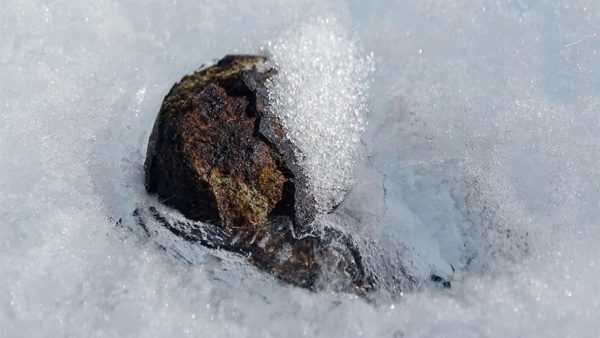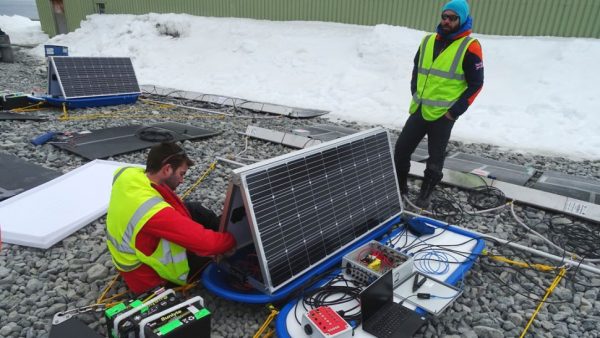Scientists Search Antarctica For The ‘Lost’ Iron Meteorites
Scientists are scouring Antarctica in hopes of finding rare meteorites which have fallen to earth and can give them more new information about how the solar system developed.
How the universe came into existence has been a question in the minds of humans as long as humans have existed.
Over the thousands of years of human existence people have come up with many explanations, but a new report from space.com suggests that one way to get some answers lies below the Antarctic ice.
A team from Britain will be making a six-week trip to Antarctica in hopes of finding five iron-rich meteorites in their survey area, which spans five square miles.

They’re hoping to gather enough material to obtain enough physical and chemical evidence to learn about the early development of the solar system.
According to NASA about 500 meteorites reach the earth’s surface every year. Most of those are bits which have broken off asteroids, and they tend to be very small – between the size of a pebble and the size of a person’s fist.
About 5% of the meteorites which land on the planet are made of meteoric iron which is primarily made up of an iron-nickel alloy. Even though the percentage of this type of meteorite is fairly small, they’re easy to distinguish from rocks which have their origins on Earth and they last longer in the ground than stony meteorites.
Meteoric iron is believed to come from the cores of planetismals, which are tiny planets which developed in the early part of the solar system and sometimes smashed together to create larger planetary bodies.
Samples of the meteorites could, therefore, teach scientists about how such bodies developed and evolved when the solar system was young.
The nebular hypothesis suggests that part of an interstellar cloud of gas and dust had a gravitational collapse, forming a solar nebula.
Bits of matter that were left behind as the nebular contracted slowly came together, forming larger and larger bodies. Some of those bodies were planetismals, so analyzing their makeup will say something about the literal composition of the solar system at the time of its formation and evolution.

Katherine Joy from the University of Manchester is one of the leaders of the Lost Meteorites of Antarctica expedition, and she’s said that, theoretically, Antarctica should be a great place for finding the types of meteorites they need, since the ice preserves them, and their dark color makes them stand out in a frozen landscape.
Furthermore, over time, the movement of the ice tends to concentrate the meteorites in areas of blue ice, making it possible to find a number of them relatively close together.
There is one drawback. For some reason, iron meteorites tend to be even rarer in Antarctica than they are in other regions of the planet, representing only about 1% instead of the expected 5%.
The team thinks the reason for that is because meteoric iron heats up more when falling through the planet’s atmosphere. When it finally comes to rest, that heat melts the frozen surface, burying the meteorites under the surface of the ice. To find them, the team is planning to use metal detectors to help them find what they are looking for.
The five-person team will begin searching near the Shackleton mountain range and will conduct their hunt by using two wide-array metal detectors that are pulled along by snowmobiles.
Each of the two specially designed metal detectors is actually an array made up of five detectors, each about 40 inches across, giving the array the ability to scan a path that’s 32 feet across.
The area they’re searching has very few rocks on the surface to slow their progress, and is close enough to Halley Station to receive air support, if necessary, reducing the danger of working in such a severe and hazardous environment.
Discovered 25,000-Year-Old Hut Made From Mammoth Bones
The team says it’s feeling confident that they will have great success.





